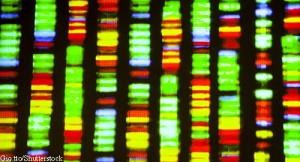 A fundamental aspect of adaptive immunity is the ability of T cell receptors to recognize peptide antigens presented on class II HLA molecules of antigen presenting cells (APCs). Although class II molecules are fundamental to adaptive immunity, they also have the ability to regulate APCs, thereby making them important players in innate immunity. Thus, at the level of MHC class II molecules, the traditionally separate branches of the immune system become intertwined.
A fundamental aspect of adaptive immunity is the ability of T cell receptors to recognize peptide antigens presented on class II HLA molecules of antigen presenting cells (APCs). Although class II molecules are fundamental to adaptive immunity, they also have the ability to regulate APCs, thereby making them important players in innate immunity. Thus, at the level of MHC class II molecules, the traditionally separate branches of the immune system become intertwined.
Immune pathologies are also considered to be of two different natures. The adaptive immune response is associated with autoimmune disease, and the innate immune response is associated with autoinflammatory disease. A better understanding of the difference between these two pathological mechanisms becomes important when optimizing patient care. For patients with systemic juvenile idiopathic arthritis (sJIA) this understanding may be critical for care.
Patients with JIA can be classified as having one of seven subtypes of JIA, the majority of which are considered autoimmune diseases. Approximately 10% of JIA cases are sJIA and present with an overtly inflammatory phenotype. Despite the distinctive presentation of sJIA, many patients receive treatment that is generalized for all subtypes of JIA. Such a treatment approach is likely suboptimal for patients with sJIA given the apparent abnormality in the innate immune response.
A new study has shed light on the unique pathology of sJIA. Michael J. Ombrello, MD, head of the Translational Genetics and Genomics Unit of the National Institutes of Health (NIH) and colleagues published the results of their international study in the Proceedings of the National Academy of Sciences.1 They performed a genetic analysis of a large group of patients (n=982) with sJIA and healthy controls (n=8,010), and found a relationship between the class II HLA region and sJIA. The investigators note that the association between HLA-DRB1*11 and sJIA implicates adaptive immune molecules in the pathogenesis of sJIA. The findings also reinforce sJIA’s unique genetic position among the JIA subtypes.
“sJIA is an enigmatic disease that has been known about for about a century,” Dr Ombrello explained to The Rheumatologist in an interview. Although genetic studies have found MHC class II associations with rheumatoid arthritis, Type 1 diabetes, systemic lupus erythematosus and several types of JIA, up until now, an association between sJIA and MHC class II has not been reported.
“We and others have long sought to determine whether HLA genes are involved in the pathogenesis of sJIA,” write the authors in their discussion. “This relationship has been examined in children from a variety of ancestral backgrounds. Many alleles of HLA-DRβ1, including HLADRB1*11, have been reported to affect sJIA risk in studies of single populations. However, no association has reached the level of genome-wide significance and no single HLA-DRB1 allele has been found to influence sJIA risk across studies or populations, leading some to conclude that class II HLA molecules are not risk factors for sJIA.”

